Practices of dairy production, Milk quality and traditional dairy foods

Abstract
There is an increased demand for milk and dairy products, changing climate and undernutrition, particularly in sub-Saharan Africa and Asia. Successful intervention is likely to arise from utilization of local resources and adapting knowledge and practices. Yet, information on indigenous dairy production practices and foods is lacking, though there has been a rich tradition in the sector. This would impede the inclusion of local perspectives in development planning processes for sustainable food system. Thus, a study was conducted to assess farmers’ knowledge and practices of dairy production, milk quality, and dairy foods in Ethiopia as a case study. Face-to-face interviews with 150 dairy producers were used to collect data. Thirty milk samples were collected for laboratory composition analysis. The results revealed that the average dairy milk yield was 2.53 l for the native bovine breed, which differed across agroecology.
Most of the producers process their milk to get different dairy products like cheese, and butter. Diverse traditional dairy foods are prepared from dairy and crop products. The values of fat, protein, lactose, solid-not-fat, and salt contents of milk were 3.79, 3.64, 2.96, 9.46, and 2.07 %, respectively. The milk fat and protein contents found in the present study fulfills the Ethiopian standard. There were about 17 indigenous plant species used for dairy stock as medicinal value and fodder, and about 11 indigenous plant species were used as good flavouring and fumigating plants for keeping milk quality. The major indigenous feeds were natural pasture, crop residues, improved forages and indigenous plants (e.g. browse) in the study area. Thus, incorporating locally available browse fodder species as a supplement needs to be encouraged more. The potential of indigenous cows for milk production needs to be enhanced. Realizing the potential of indigenous production practices and local dairy foods requires promoting their efficient use and combining them with available scientific practices. This approach can help adapt agri-food systems to changing climates and sustainably contribute to food security.
Traditional knowledge
Local foods
Undernutrition
Sustainable production
Agro-biodiversity
Sub- Saharan Africa
1. Introduction
There is widespread consensus that food system transformation needs to include a higher emphasis on food biodiversity in order to accommodate a larger number of food species into sustainable food system strategies. Food biodiversity, or the range of animal and plant species used for food, is one strategy to promote both human and environmental health. It is associated with the production and consumption of nutritious, traditional, and indigenous foods. Food biodiversity can help to build sustainable food systems that support efforts to end hunger, combat malnutrition, enhance livelihoods, and promote socio-cultural well-being.

Dairy production is fundamental to the economic development and sustainability of several low- and middle-income countries, where it provides critically important contributions to nutrient cycling, generates cash and poverty alleviation, and serves as a vital source of manure for crop production, cooking fuel, and women’s empowerment. Low-income countries have different resources and climatic and geographic conditions than high-income countries, so most interventions cannot be adopted directly. Instead, successful intervention in low-income countries will likely result from defining regional production goals and adapting knowledge and practices to the local conditions. Traditional agricultural practices in sub-Saharan African could play a valuable role in influencing modern-day sustainable farming. Using manure as fertilizer significantly increases crop yield, and feeding livestock with straw can support livestock nutrition during the dry season Integrating crop and livestock systems has the potential to deliver numerous benefits, including high socioeconomic output and better environment.
The extent of economic gains from agro-biodiversity is mostly determined by the existing indigenous plant and livestock diversity, as well as local farmers’ techniques and knowledge. In the coming years, dairy production in the tropics will require the selection and usage of dairy breeds suited to specific tropical regions, as well as improvements in the quality and digestibility of different crops tolerant of droughts and high temperatures. In the next 50 years, dairy farmers in the tropics will have to deal with the aforementioned factors in a world where the population will continue to expand, arable land will shrink, and climate conditions will be increasingly adverse for both crops and dairy cows. Poor rural households must rely on site-specific indigenous knowledge passed down through generations since they lack the requisite facilities and technology to process, preserve, and store food.
Despite this, the use of indigenous foods has diminished due to the neglect of their potential in modern commercialised and industrialised markets, as well as a lack of investment in research and development. The majority of milk and milk products are produced utilising artisanal technologies on farms, and the varieties and processing procedures of these dairy products might vary significantly from one place to the other. In Ethiopia, dairy production is one of the livestock subsectors and is characterised almost entirely by rural smallholder dairy production utilising indigenous cattle. Dairy production using dairy breeds is still in its early phases Rural communities have accumulated knowledge regarding milk production over generations.
Local research is necessary to understand the specific limits on smallholder production systems and develop appropriate solutions, as many mechanical and technological solutions established for large-scale dairy farms are too costly or difficult for smallholders to use. For instance, the system of milk production, processing, and consumption differs by location, and culture.
Traditional knowledge and practices will be an invaluable resource for adjusting livestock management to changing climate conditions. The conversion of local and indigenous knowledge into practical innovations and indicators is critical for altering livestock production systems and value chains. This approach ensures that traditional learning is incorporated into contemporary activities.
There is a need for an integrated system of knowledge, in which indigenous peoples can not only share their experiences to face future obstacles, but also become active agents of change. Indigenous Knowledge Systems (IKS) are becoming seen as naturally incorporating most features and ideas of the SDGs. Awareness of traditional food sources, as well as the underlying link between food systems and healthy landscapes, contributes to more diverse and sustainable diets. Identification of potential areas and effective documentation of traditional practices are excellent starting points for livestock sector improvement. However, knowledge on indigenous dairy production and maintaining milk quality and foods is lacking, though there has been a rich tradition in the sector that has hindered its development with improved quality, and health benefits for sustainable food security in developing countries. A previous study conducted elsewhere in Ethiopia focused on milk handling and butter-making practices among smallholder farmers. With this understanding, the aim of the study was to assess farmers’ indigenous dairy production practices, chemical composition of milk and associated traditional dairy foods in Ethiopia using case study approach. The country is ancient, with many traditions and indigenous knowledge; the findings are relevant to other African and developing countries in terms of achieving SDGs 2, 3, and 13, as well as addressing key challenges for Ethiopia’s food system, such as low dietary diversity, climate
Materials and methods
2.1. Case study area
The case study was conducted in Damot Sore district, Wolaita zone, southern Ethiopia. It is located in the south-west of Wolaita Sodo, and 397 km away from Addis Ababa. The geographic location is 35‘740N “latitudes and 37‘660 E “longitude in altitudes of 1350–2500 m. a. s. l. The average rainfall and temperature of the study area are 1400 mm and 20.5 °C, respectively.
The total human and livestock population of the district are 138,858 and 238,327. The area is known for its mixed livestock farming system, and major crops growing in the area are cereal crops (maize, sorghum, wheat, and barley), pulse crops (pea, bean, and haricot bean), root crops, and other perennial crops like coffee and enset in different amounts of land coverage. Wolaita is one of the areas with a strong potential to achieve growth in milk production, including conducive highland agro-ecology, high demand for milk and its products and market routes.
2.2. Sampling technique
This study employed cross sectional study design. Two kebeles (the smallest administrative units) (Doge Mashido and Anchucho Chawukare) were purposively selected based on their dairy production potential and representation of agro-ecology. For data collection, 150 households were selected from 240 recorded dairy farmers across two agroecological zones (70 from highland and 80 from mid-altitude) using a simple random sampling method. The sample size was determined using the formula as follows:n=N1+N(e)2,
Where N=study population n= required sample size, e= expected percent of error
2.3. Data collection
The study contained two parts: part one was survey work conducted among farmers, while part two was laboratory milk testing for chemical composition. A semi-structured questionnaire was prepared and used to collect primary data concerning both qualitative and quantitative parameters. All respondents gave their informed consent for inclusion before they participated in the study/ interviews. Respondents are smallholder dairy farmers who keep indigenous bovine breeds and possess knowledge and practices of dairy production, including the use of indigenous medicinal plants for dairy stock, milk quality, and traditional dairy foods. Concerning sampling of milk, among surveyed households, a total of 30 milk samples were taken from surveyed dairy households in the two agro-ecologies (i.e., 15 samples from highland and 15 samples from mid-altitude). During collection, approximately 250 ml of raw milk was taken aseptically from the owner’s container and then placed into sterile glass bottles. Consequently, samples were labelled and put in an icebox (4°C) and transported to the Wolaita Sodo University Department of Animal Sciences Laboratory to test using Ultrasound Technology Eco Milk Analyzer. The Analyzer can screen incoming raw milk samples to identify milk composition, including fat, protein, lactose, solid-not-fat, and salt contents.
Results and discussion
3.1. Characteristics of farm households
The majority (83% and 41%) of household heads studied were male and illiterate, respectively. The average household head age and cattle herd size were 31.84 ± 12.32 years and 13.29 ± 5.58, respectively. The average family size per household was four people. Most of the households (43 %) depended mainly on the sale of milk and products.
Table 1. Socio economic characteristics of sampled households.
| Variables | Agro-ecology | Empty Cell | ||||
|---|---|---|---|---|---|---|
| Empty Cell | Highland (n=70) | Mid-altitude (n=80) | Overall (n=150) | |||
| Empty Cell | N | % | n | % | n | % |
| Household gender Male | 57 | 81 | 68 | 51 | 125 | 83 |
| Female | 13 | 19 | 12 | 49 | 25 | 17 |
| Marital status | ||||||
| Single | 8 | 11 | 12 | 15 | 20 | 13 |
| Married | 46 | 66 | 60 | 75 | 106 | 71 |
| Divorced | 16 | 23 | 8 | 10 | 24 | 16 |
| Education level | ||||||
| Illiterate | 29 | 41 | 32 | 40 | 61 | 41 |
| Read and write | 17 | 24 | 19 | 24 | 36 | 24 |
| Primary school | 15 | 21 | 16 | 20 | 31 | 21 |
| Secondary and above | 9 | 13 | 13 | 16 | 22 | 14 |
| Major income sources | ||||||
| Milk and product sales | 28 | 40 | 35 | 44 | 64 | 43 |
| Crop sale | 21 | 30 | 23 | 29 | 43 | 29 |
| Employee | 14 | 20 | 16 | 20 | 30 | 20 |
| Other | 7 | 10 | 6 | 7 | 13 | 8 |
| Age (Mean±SD) | 31.21±12.30 | 32.48±12.67 | 31.84 ±12.32 | |||
| Family size | 4.12±1.61 | 4.31±1.04 | 4.22±1.17 | |||
| Cattle herd size | 13.85±2.65 | 12.74±2.52 | 13.29±5.58 | |||
Feeds and feeding
The major feed resources identified in the study areas were natural pasture, crop residues, improved forages, and indigenous plants (e.g., browse). Dairy production can also be environmentally sustainable, especially when cattle diets rely on crop by-products and non-commodity feeds such as pastures and forages. According to the current study, natural pasture like duppa (Pennisetum spp schimperi), improved forages (desho grass (Pennisetum pedicellatum), elephant grass (Pennisetum purpureum), Phalaris (Phalaris aquatica), Guatemala (Tripsacum andersonii) and Sesbania (Sesbania sesban), and indigenous browse tree plants like korch (Erythrina Abyssinica), Gaara (Vernonia amygdalina Del.), Itriwanjiya (Ehretia cymosa Thonn), crop residues (teff straw, haricot bean straws and maize Stover),) were commonly found. Using crop residue as fodder for livestock reduces waste, and enhances nutrient cycling and also feeding pasture is useful for quality of milk products. The nutritional profile and functional characteristics of butter improve when dietary pasture intake increases, principally due to higher quantities of unsaturated fatty acids.
Table. Ranked feed resources of dairy cattle in the sampled households.
| Feed types | Index | Rank |
|---|---|---|
| Natural pasture | 0.182 | 1 |
| Improved forages | 0.157 | 3 |
| AIBP | 0.139 | 5 |
| Browses | 0.155 | 4 |
| Crop residue | 0.168 | 2 |
| Concentrates | 0.114 | 6 |
| Others | 0.085 | 7 |
N= Sample respondents. %=per cent, AIBP= Agro- industrial by-products (Wheat bran and Mamasha/milling by product)
The existing diversity of indigenous crop/plants as well as local farmers’ techniques and knowledge about using them as fodder for livestock are components of agrobiodiversity that contribute to partly responding to changing conditions. The collection, validation, and dissemination of traditional knowledge and approaches aim to enhance livestock resilience and productivity. Moreover, integrating with scientific knowledge such as proper storage, selection of crop species and physical processing ensure high-quality and high crop residue yield. Feed related indigenous knowledge often includes time-tested practices that are well-suited to local environments. When combined with scientific advancements, these practices can lead to more sustainable and productive feeding methods.
Calf feeding practice
All dairy producers practiced colustrum feeding and partial suckling prior to milking their calves. Then, the majority (66 %) started supplementation with indigenous plant parts besides milk feeding. Producers feed calf after two months, Gaara (Vernonia amygdalina Del)(63 %), Itiriiwanjiya (Ehretia cymosa Thonn) (19 %), Damburssa (Pentas schimperiana (A. Rich) Vatke) (11 %), and Gumariya (Grewia bicolour Juss) (8 %). Gaara and Gumariya are believed to help in treating gastrointestinal problems, and the others are used for calf feeding to promote strength and growth. Yet, Scientific evidence is needed, and combining this with scientific techniques can lead to more efficient use of it, enhancing its contribution and long-term sustainability.
Table. Calf feeding practices in study area.
| Variables | Description | N | % |
|---|---|---|---|
| Colostrum feeding | Yes | 150 | 100 |
| Supplementary feeding | Yes | 134 | 89.33 |
| No | 16 | 10.67 | |
| Type of indigenous plant for feed | Gumariya | 12 | 8 |
| Damburisa | 16 | 10.66 | |
| Gaara | 95 | 63.33 | |
| Itiriwanjiya | 28 | 18.66 |
Key: Gaara (Vernonia amygdalina Del.); Gumariya (Grewia bicolour Juss); Damburssa (Pentas schimperiana (A. Rich) Vatke); Itiriiwanjiya (Ehretia cymosa Thonn)
3.4. Milk production and consumption
The average daily milk yield in the study area was 3.50 l per stock. This result is higher than the national average (1.45 l) and the finding reported by that the average daily milk yield is 2.14 l for local dairy cows in Kefa zone, Ethiopia. Moreover, climate is changing in Wolaita area. Native animals are typically well adapted to the climate and stressors in low-income countries, such as heat and endemic diseases. However, these animals were not selectively bred to produce more milk. Variation among and within breeds provides the raw material for genetic improvement. If the resource is utilised, it has substantial potential for improvement towards sustainable livestock production. Indigenous cattle are well endowed with adaptive traits to endemic diseases, fragile climatic conditions, and poor feed resources, and the current cross-breeding practices may result in an irreversible loss of genetic variation. Indeed, scientists have already warned that this loss spells disaster for Africa’s food security and livestock genetic pool for the next generation. This calls for appropriately planned crossbreeding to protect the loss of local genetic diversity. Indigenous communities often have a deep understanding of local biodiversity and ecosystems. Integrating this knowledge with scientific research can help in the conservation of biodiversity, which is crucial for sustainable agriculture and food security.
Table. Milk production performance in the study area.
| Variables | Description | Agroecology | Overall | P-value | |
|---|---|---|---|---|---|
| Highland | Midaltitude | ||||
| Daily milk yield (Lt) | Early | 3.25 | 3.01 | 3.13 | 0.001 |
| Mid | 2.80 | 2.70 | 2.75 | 0.003 | |
| Late | 1.90 | 1.50 | 1.70 | 0.04 | |
| Average | 2.65 | 2.40 | 2.53 | ||
| Milking frequencies (%) | Once a day | 6 | 10.45 | 6.25 | 0.56 |
| Twice a day | 49.7 | 50.3 | 89.28 | 0.03 | |
| Thrice a day | 44.3 | 38.98 | 4.47 | 0.68 | |
| Lactation length (months) | 8.01±0.81 | 7.83±0.62 | 7.40±0.72 | 0.02 | |
In the present study,In the present study, most dairy stock was milked twice a day (89.28 %). The majority (65 %) of milk is consumed in raw form, followed by fermented form such as sour milk /Ergo (20 %) and buttermilk (15 %). Drinking raw milk by indigenous rural people is believed to be natural/traditionally accepted, though there is a risk of microbial safety. Fermentation as a preservation method, sour milk, and buttermilk are part of the local foods’ recipe, consumed with various traditional foods, and are also useful for consumers with special dietary requirements, such as probiotics that offer distinct health benefits, and for lactose-intolerant people. Fermented milk has an important socio-economic role and is widely practised in Africa due to the low energy required by the process and to the high nutritional value of fermented dairy products, such as yoghurt and sour milk.
most dairy stock was milked twice a day (89.28 %). The majority (65 %) of milk is consumed in raw form, followed by fermented form such as sour milk /Ergo (20 %) and buttermilk (15 %). Drinking raw milk by indigenous rural people is believed to be natural/traditionally accepted, though there is a risk of microbial safety. Fermentation as a preservation method, sour milk, and buttermilk are part of the local foods’ recipe, consumed with various traditional foods, and are also useful for consumers with special dietary requirements, such as probiotics that offer distinct health benefits, and for lactose-intolerant people. Fermented milk has an important socio-economic role and is widely practised in Africa due to the low energy required by the process and to the high nutritional value of fermented dairy products, such as yoghurt and sour milk.

Indigenous plants used for smoking
According to the current findings, there were around 11 distinct plant species in the study region primarily used for fumigating and smoking milk equipment (mostly clay pots) to obtain good flavours in milk and milk products. This practice helps produce milk with good flavour and aroma, extend shelf life, and suppress bacterial growth. The diversity and type of smoking plants differ across locations/ regions. For instance, reported plants such as cheba (Acacia spp.), Dokima (Syzygium guineanse), Woyira (Olea Africana), Embuay (Solanum incanum), or maize cob to enable the fermentation process and associated taste and aroma of the milk products. The fumigation of the milk-handling containers is accomplished by smoke as a means of disinfection after cleaning from smouldering wood of specific tree species, which includes Olea africana, Acacia nilotica, Balanites aegyptiaca, and the Combretum spp. The chemicals found in wood smoke are the result of heat-induced chemical reactions between heated polymers, gasified intermediates, and moisture . The majority of smoke components are natural antimicrobials, which contribute to the preservation impact on milk and milk products as well as the increased organoleptic qualities of smoke-treate.
Table. Traditional plants used for smoking milk containers in study area.
| Smoking plant local name | Scientific names | Index | Rank |
|---|---|---|---|
| Goofigoofuwa | Cissampelos pareira L | 0.078 | 11 |
| Kosorotiya | Lippi adoensis Hochst. | 0.085 | 7 |
| Guccecha | Cymbopogon citratus | 0.113 | 2 |
| Settuwa | Satureja paradoxa (Vatke) Engler | 0.090 | 5 |
| Guluwa | Ocimum gratissmum L. | 0.115 | 1 |
| Cacuwa | Premna schimperi Engl. | 0.085 | 8 |
| Paranja zaafiya | Eucalyptus globulus Labill. | 0.094 | 3 |
| Xayta | Protea welwitschii Engl | 0.088 | 6 |
| Zimbanuwa | Thymus schimperi Ronniger | 0.081 | 9 |
| Hiranuwa | Grass spp | 0.079 | 10 |
| Keefuwa | Ocimum basilicum L. | 0.091 | 4 |
3.6. Indigenous medicinal plants for dairy stock
Information concerning the ethnomedicinal uses of plants, specific plant parts, and application methods is critical to both the preservation of traditional knowledge and provides a basis for future drug discovery activit. The common indigenous plant species for dairy animals used for medicinal value are shown in. Plant leaves, stems, and roots are cut and mixed with water before being consumed. Such efforts will help to improve milk compositional quality while also providing natural remedies to concerns about antibiotic use, however doses and chemical composition of plant parts have yet to be identified. In the last two decades, efforts have been made to discover novel therapeutics to combat multidrug resistance, especially with plants and deep-sea flora. Natural products have the potential to provide novel biologically active molecules, which could lead to the development of new therapies. Natural products based on traditional knowledge account for approximately 50 % of modern medication A vast majority of the global population depends on traditional medicines for health care. The use of chemical pesticides and pharmaceutical medications to address cattle pests and diseases harms the environment and promotes resistance.
Table. Common indigenous medicinal plant species, preparation and importance.
| Local name | Scientific names | Parts used | Preparation | Importance |
|---|---|---|---|---|
| Wobaxa | Sphaeranthus suaveolens (Forssk.) DC. | Leaves | Pounding, boiling, liquid form | Increase fat content |
| Gaara | Vernonia amygdalina Del. | Leaves | Pounding, liquid form | Diarrhoea |
| Itiriwanjiya | Ehretia cymosa Thonn. | Leaves | Pounding, liquid form | Milk secretion/consistence |
| Wosolluwaa | Impatiens hochstetteri Warb. | Leaves and stem | Liquid form | Milk consistence |
| Xaalotiya | Ruta chalepensis L. | Leaves | Liquid form | Abdominal pain |
| Eeca | Cucumis dipsaceus Ehrenb. | Bark part | Chopped, boiled, liquid form | Initiate milk production by heifer |
| Locingiya | Ensete ventricosum | Leaves and corm | Chopped | Retained placenta |
| Bidariya | Cyperus articulatus L. | Roots | Chopped | bloat |
| Kana hamaka | Herb spp | Leaves | Pounding, liquid form | Bloat and urinary difficulty |
| Borisa | Echinops kebericho Mesfin | Roots | Pounding, liquid form | Intestinal worms |
| Gumariya | Grewia mollis | Leaves | Pounding, liquid form | Intestinal worms |
| Dambursa | Pentas schimperiana (A. Rich) Vatke | Leaves and root | Pounding, liquid form | Broken animal |
| Gifetanuwa | Ensete ventricosum | Leaves and stem | Chopped | Disease prevention |
| Dandireta | Sida acuta Burm.f. | Fresh leaves | Pounding | Internal parasite, emaciated animal |
Summary
Dairy production involves a range of practices aimed at ensuring animal health, efficient milk extraction, and hygiene. Key practices include proper feeding, regular veterinary care, clean housing, and hygienic milking techniques to maintain animal welfare and high milk yield. Milk quality is influenced by factors such as animal health, cleanliness during milking, storage conditions, and rapid cooling to prevent bacterial growth. Quality testing includes checking for fat content, protein levels, microbial load, and contaminants. Traditional dairy foods, such as yogurt, cheese, butter, and ghee, are produced using age-old methods that often involve natural fermentation and minimal processing. These products not only preserve milk but also enhance its nutritional and sensory qualities, playing an important role in local diets and cultural heritage.

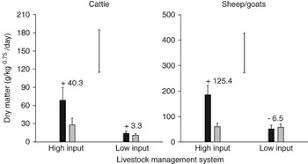
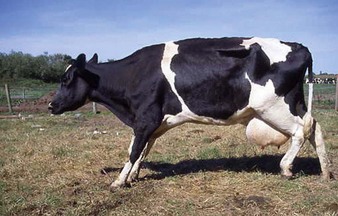
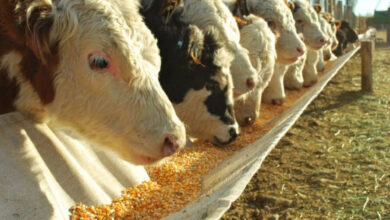
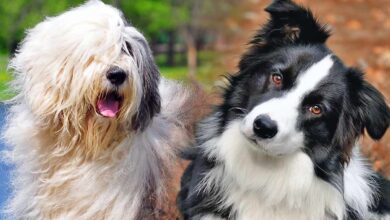
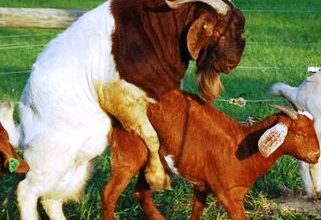
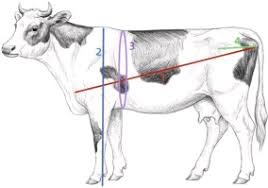
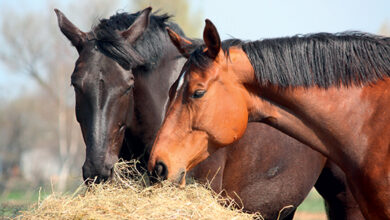
2p7qtz